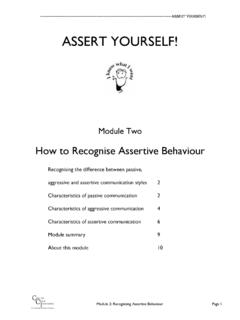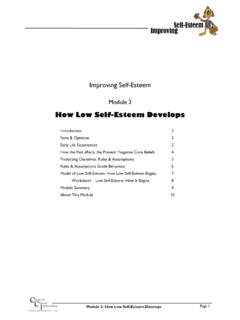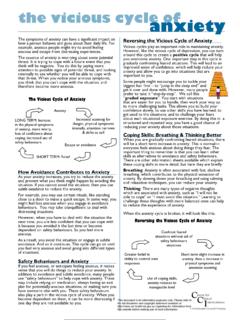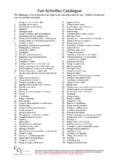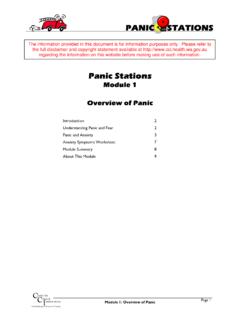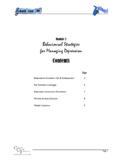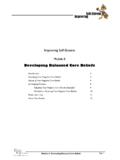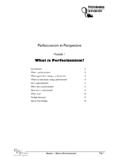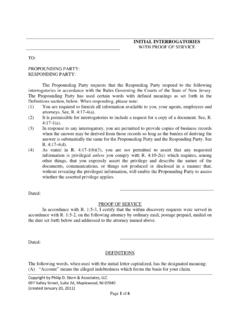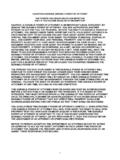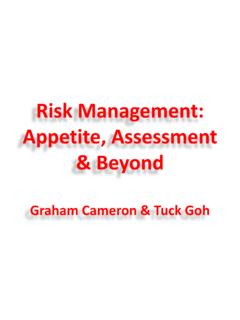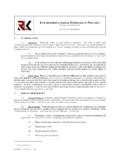Transcription of ASSERT YOURSELF! - WA Health
1 ---------------------------------------- ---------------------------------------- ------------------------------ ASSERT yourself ! ASSERT yourself ! Module Ten Putting it all Together Summary so far! 2. Steps to improving your assertiveness 3. Step 1: Creating an assertiveness hierarchy 4. Steps 2 and 3: Challenging unhelpful thinking 4. Steps 4 and 5: Changing unhelpful behaviour 5. Steps 6 to 9: Rehearse and practise 5. Your turn! 6. Assertiveness worksheet 7. Re-rate your assertiveness 8. Module Summary 9. About this module 10. Centrelinical for C Interventions Module 10: Putting it all Together: Being More Assertive Page 1. Psychotherapy Research Training ---------------------------------------- ---------------------------------------- ------------------------------ ASSERT yourself ! Summary so Far! In the previous modules you have learned what assertiveness is (module 1), how to recognise assertive, passive and aggressive behaviour (module 2), how to change your unassertive thinking (module 3), some assertiveness techniques (module 4) and how to reduce your physical tension (module 5).
2 You have also looked at how to become more assertive in specific situations, for example saying no (module 6), being criticised and giving criticism (module 7), living with disappointment (module 8) and giving and receiving compliments (module 9). In this module we are going to put all these skills together and show you the steps to take to improve your assertiveness. Steps to Improving Your Assertiveness The steps are: 1. Identify the situations you want to work on. Think about how you normally deal with these situations. Do you normally deal with it in a passive or aggressive way? List these situations in order from easiest to hardest in an assertiveness hierarchy (see below). 2. Identify any unhelpful thinking associated with these situations. 3. Come up with a more assertive way of thinking about the situation. Use a Thought Diary if you need to. 4. Identify any unhelpful behaviour you have been using when you have tried to do the task before.
3 Remember to look at both verbal and non-verbal behaviour. 5. Come up with a more helpful behaviour. Use one of the techniques you learned in module 3 if it is appropriate. 6. Rehearse what you are going to say and do. It can be helpful sometimes to write down what you want to say. 7. Do the task you have identified. 8. Once you have done the task praise yourself for what went well and then work out what you might want to improve on next time. 9. Keep practising until you feel comfortable being assertive in this situation. Centrelinical for C Interventions Module 10: Putting it all Together: Being More Assertive Page 2. Psychotherapy Research Training ---------------------------------------- ---------------------------------------- ------------------------------ ASSERT yourself ! Step 1. Creating an Assertiveness Hierarchy In order to become more assertive you need to write down 10 situations in which you would like to be more assertive.
4 This can be at home, at work, with friends or out in public. You will have got some ideas from the exercise Rating your assertiveness in different situations? that you completed in Module 1. If you didn't do this exercise, now would be a good time to have a look at it. If you did complete it you may want to have another look at it to remind yourself of your responses. You may also have got some ideas from the Thought Diary work you have been doing or some of the modules that looked at specific situations like saying no , receiving and giving criticism and dealing with disappointment. If you are still struggling to identify situations to work on think about the following situations. They may help you. How do you respond when: The food you ordered is cold or overcooked? Someone is smoking in a non-smoking section? You want to ask a friend to return some money they borrowed from you?
5 Everybody leaves the washing up to you? You are irritated by a habit in someone you love? If you think you respond passively or aggressively in the above situations you may want to add these to your list. Once you have written your list you need to work out the order of difficulty. To do this first give each situation a rating of how hard or difficult you think the task would be. Another way of thinking about it is to ask yourself how anxious would it make you. You give each situation a rating from 0-100. A rating of zero would mean the task wasn't difficult at all. A rating of 100 would mean it was the most difficult thing you could imagine doing. Using the ratings you can then work out which task would be the easiest and which would be the hardest. You can then give each task a rank going from the easiest to the hardest. Centrelinical for C Interventions Module 10: Putting it all Together: Being More Assertive Page 3.
6 Psychotherapy Research Training ---------------------------------------- ---------------------------------------- ------------------------------ ASSERT yourself ! Below is an example hierarchy: My Assertiveness Hierarchy Situation Rating Rank (0-100). 1. Tell my mother-in-law that I don't want her to smoke in my 70 9. house. 2. Ring the loan agency and tell them I need more time to decide if I 50 8. want the loan or not. 3. Tell the neighbour that their dog is keeping me awake at night. 40 6. 4. Tell my partner that I want a night by myself. 45 7. 5. Apologise to a work colleague for being irritable the other day. 30 3. 6. Ask the kids to do their chores. 20 1. 7. Ask my friend to return the book I lent her three months ago. 25 2. 8. Tell my boss that I have too much work on at the moment and 80 10. can't take on the new project she asked me to do. 9. Ring my piano tuner and tell them that the piano isn't tuned 40 5.
7 Properly. 10. Tell my Dad how much I love him. 30 4. Once you have written your hierarchy you start with the easiest task on the list. In the case above it is asking the kids to do their chores. Steps 2 and 3. Indentify and Change any Unhelpful Thinking! As you learned in Module 3, there is usually some unhelpful thinking underneath non- assertive behaviour. So before you try the task see if you have some unassertive thinking that has been stopping you from doing the task. In the example above the person identified an unassertive thought: If I keep telling the kids to do their chores they will get annoyed at me and might not like me or think I am a good mum . Centrelinical for C Interventions Module 10: Putting it all Together: Being More Assertive Page 4. Psychotherapy Research Training ---------------------------------------- ---------------------------------------- ------------------------------ ASSERT yourself !
8 They used a Thought Diary and came up with the more assertive thought: All kids get annoyed at their mum sometimes, it doesn't mean they don't like them. It is important for the kids to learn how to do chores. To be a good mum sometimes I will have to get the kids to do things they don't like. They may thank me for that later.. Once they had come up with this new thought they were able to do that task and move onto the next task. Step 4 and 5. Identify and Change any Unhelpful Behaviour The person who wrote the hierarchy above recognised that when she asked the kids to do their chores she would usually feel guilty, apologise to the kids, and think she had to give the kids something to make them like her better. She would usually buy them some lollies or fast food. She identified these as unhelpful behaviours. She worked out that a more helpful behaviour would be to just ask them to do the chore without apologising, and verbally praise them once they had done it rather than buy them something.
9 Step 6 to 9. Rehearse and Practice! In this situation the person didn't feel the need to write anything down beforehand. However she did have to practice asking them to do their chores and not apologising to them or buying them something for a couple of weeks before she started feeling more comfortable. Centrelinical for C Interventions Module 10: Putting it all Together: Being More Assertive Page 5. Psychotherapy Research Training ---------------------------------------- ---------------------------------------- ------------------------------ ASSERT yourself ! Your Turn! Now that you have seen the steps to becoming more assertive have a go at writing your assertiveness hierarchy: My Assertiveness Hierarchy Situation Rank 1. 2. 3. 4. 5. 6. 7. 8. 9. 10. Centrelinical for C Interventions Module 10: Putting it all Together: Being More Assertive Page 6. Psychotherapy Research Training ---------------------------------------- ---------------------------------------- ------------------------------ ASSERT yourself !
10 Assertiveness Worksheet For each item on the hierarchy you can use the following worksheet to guide you through the steps. 1. What is the situation I want to become more assertive in? _____. _____. 2. What unhelpful beliefs are maintaining the unassertive behaviour? _____. _____. _____. _____. 3. What are more assertive beliefs? _____. _____. _____. 4. What unassertive behaviours am I using? _____. _____. _____. _____. 5. What are more assertive behaviours I could use? _____. _____. _____. _____. Centrelinical for C Interventions Module 10: Putting it all Together: Being More Assertive Page 7. Psychotherapy Research Training ---------------------------------------- ---------------------------------------- ------------------------------ ASSERT yourself ! Are you More Assertive? Congratulations! You have now completed all the modules in the programme ASSERT yourself .
